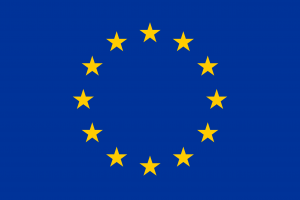Travelling to Europe
If you are a Canadian citizen traveling to Europe, you will find below a list of answers to your questions. Some changes to the European travel process are coming as of October 12, 2025. As of today, here is what you need to know. (Updated: August 2025)
The Schengen area
The Schengen area includes 29 European countries with common entry and exit requirements to remove the need for internal borders. It allows travellers to move freely between these countries without needing to go through border checks or get separate visas.
Schengen area countries: Austria, Belgium, Bulgaria, Croatia, Czech Republic, Denmark, Estonia, Finland, France, Germany, Greece, Hungary, Iceland, Italy, Latvia, Liechtenstein, Lithuania, Luxembourg, Malta, Netherlands, Norway, Poland, Portugal, Romania, Slovakia, Slovenia, Spain, Sweden, and Switzerland.
Cyprus and Ireland belong to the European Union but not to the Schengen area.
Today, do I need a visa or any type of registration to travel to Europe for a short stay (less than 90 days)?
For Schengen area countries, Cyprus and Ireland. Canadian citizen do not need a visa for a short stay (up to 90 days in any 180-day period). Your only need a passport valid for at least 3 months after your planned departure date.
If you want to stay longer than 90 days in a Schengen country, you should check if you can apply for an extension of stay. If not, you must apply for an appropriate visa before you travel. Overstaying could lead to fines or deportation.
Calculate your stay : Use the European Commission Visa Calculator to track your days
Will I need a visa or any type of registration to travel to Europe in the future for a short stay (less than 90 days)?
If you are a Canadian citizen, you will not need any additional registration besides your passport if you travel to the Schengen area countries before 2026.
Yet, for Candian citizen, the travel process to the Schengen countries area would gradually change in the months to come.
The Entry/Exit System (explained below) will begin on October 12, 2025.
The European Travel Information and Authorisation System (ETIAS) (explained below) is scheduled to be introduced in the last quarter of 2026. The exact date will be announced at least six (6) months before the system enters into operation.
What is the Exit/Entry System (EES)?
Starting on October 12, 2025, non-EU nationals travelling to the Schengen Area for a short stay will get their pictures and fingerprints taken at the external borders of 29 European countries. This is a system similar to the one used by Canada for its foreign visitors. The EES modernises border management by increasing the efficiency and quality of processes at the border. This simplifies travel and makes it safer.
What is the European Travel Information and Authorisation System (ETIAS)?
ETIAS is an entry requirement for visa-exempt nationals similar to ones already in place in Canada (eTA), the United States (ESTA), United Kingdom, and Australia.
ETIAS is not a visa. It only covers short-term stays to the 30 aforementioned countries. It will cost 20 euros and be valid for three (3) years or until your passport expires. and be valid for three (3) years or until your passport expires.
When will ETIAS go into effect?
ETIAS is scheduled to be introduced in the last quarter of 2026. The exact date will be announced at least six (6) months before the system enters into operation.
How long does the ETIAS travel authorization remain valid?
Your ETIAS travel authorisation will be valid for three years or until your travel document expires – whichever date comes first. For example, if your passport is valid for two years, your ETIAS travel authorization will only be valid for two years.
Where do I apply?
You will be able to apply using the official ETIAS website or the official ETIAS mobile app once they are live.
Third-party intermediaries can be authorised by you to apply for an ETIAS travel authorisation on your behalf. Before you decide to use these services, make sure that you verify the quality of their services, be aware of additional charges, and determine how they protect your data.
More questions and answers will be published here as we get closer to the implementation date. Stay tuned!
If you are looking for more information, please visit the official EES/ETIAS website.
For visitors travelling to Canada, here is a list of EU Embassy/Consulates in Canada.








